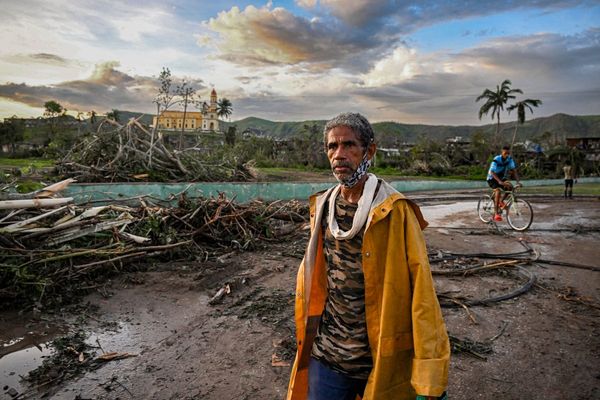A NEW podcast series is aiming to open people’s eyes to Scotland’s hidden Neolithic history.
Matthew Magee released the first series of his podcast Stone Me last year after he’d caught the ancient history bug on a trip to Orkney a few summers ago.
He took listeners on an adventure to the likes of the Ness of Brodgar and Ring of Brodgar in Orkney, the Stones of Calanais in Lewis and Machrie Moor in Arran, speaking with experts at each site in the hope of helping people to learn more about the wonders of Scotland’s stone circles.
He has now begun releasing a second series which continues to have some focus on stones, but also branches out to some more unassuming Neolithic sites and others we’d likely not even notice unless someone told us about them.
This time, Magee ventures to the likes of Balfarg Henge in Glenrothes – a stone circle that sits in the middle of a housing estate – and Doon Hill in Dunbar, a hilltop where the remains of two timber halls were found through aerial photography, though nothing survives of them above ground today.
The well-preserved Maeshowe tomb in Orkney – believed to be one of the finest pieces of stonework from the period – and the Cairn Holy chambered cairns in Dumfries and Galloway are also explored in the series.
Magee additionally visits a cursus monument near Biggar. A cursus is a huge monument dug into the land, so it was almost invisible to Magee but for a slight indentation in the grass which had to be pointed out to him.
Magee said: “What I was keen to do this time was include some beautiful, big, glamourous sites like the Carin Holy tombs in Dumfries and Galloway, like the Maeshowe tomb in Orkney mainland, but I also wanted to include some things that are functionally invisible so you would walk past them and not know they were there.
“I think it’s really important to broaden out my view and the podcast’s view of Neolithic life beyond these huge things that happen to still be there. There were other things made out of wood that we have no evidence left of because it doesn’t last for 5000 years.

“We can end up with quite a skewed view of Neolithic society if we only focus on things that are made out of stone. We can also have quite an Orkney-biased view of Neolithic life because they built out of stone more than wood.
“That’s why you hear so much about Neolithic Orkney because we can see it. So I’m trying to address that. Having said that, two episodes are still on things in Orkney!”
The series also sees Magee return to the Ness of Brodgar in Orkney as the monumental complex of Neolithic buildings dating from around 3500 to 2300BC was covered up after a 20-year excavation.
Given the Ness largely consists of quarried stone rather than the resilient beach stone at Skara Brae, if the complex were left open to the elements, it would become unrecognisable in a couple of years.
When asked what his most fascinating discovery had been, he said it was hard to get away from the Ness of Brodgar, with dig director Professor Nick Card telling The National last month “almost every type of Neolithic artefact you could ever dream of” has been found there.

Magee said: “I did a programme in the first series [on the Ness of Brodgar] and I had to go back because in August they started covering the site over.
“It is this unbelievable set of ceremonial buildings. It is unique. Something like that hasn’t been found in Scotland.
“I was able to go there once it had been closed to the public and actually walk among the buildings which was an incredible experience. Your perspective shifts because instead of looking at a 2D floor plan from above, you get a real sense of them as places where people would’ve worked and moved.
“I was there as the digger moved in and started lifting earth and covering it over, these 5000 year old buildings that will probably never be seen by human eyes again. It was an unbelievably moving experience to be there.”
The second series of Stone Me also features an episode on rock art, after Magee visited several sites where neolithic art, carved into large slabs of rock that still sit in the ground, is still visible.
Part of this episode sees him return to Kilmartin Glen in Argyll where he was able to fulfil a long-held ambition of taking part in an archaeological dig.
Magee uses sustainable transport to get to all the sites he visits, travelling by bike, boat and train, and the raw podcast aims to capture being out in the wilderness, as he records himself walking over undulating land to the sites and speaking with experts out in the open.
The first episode of the second series of Stone Me is out now and you can listen to it here.







